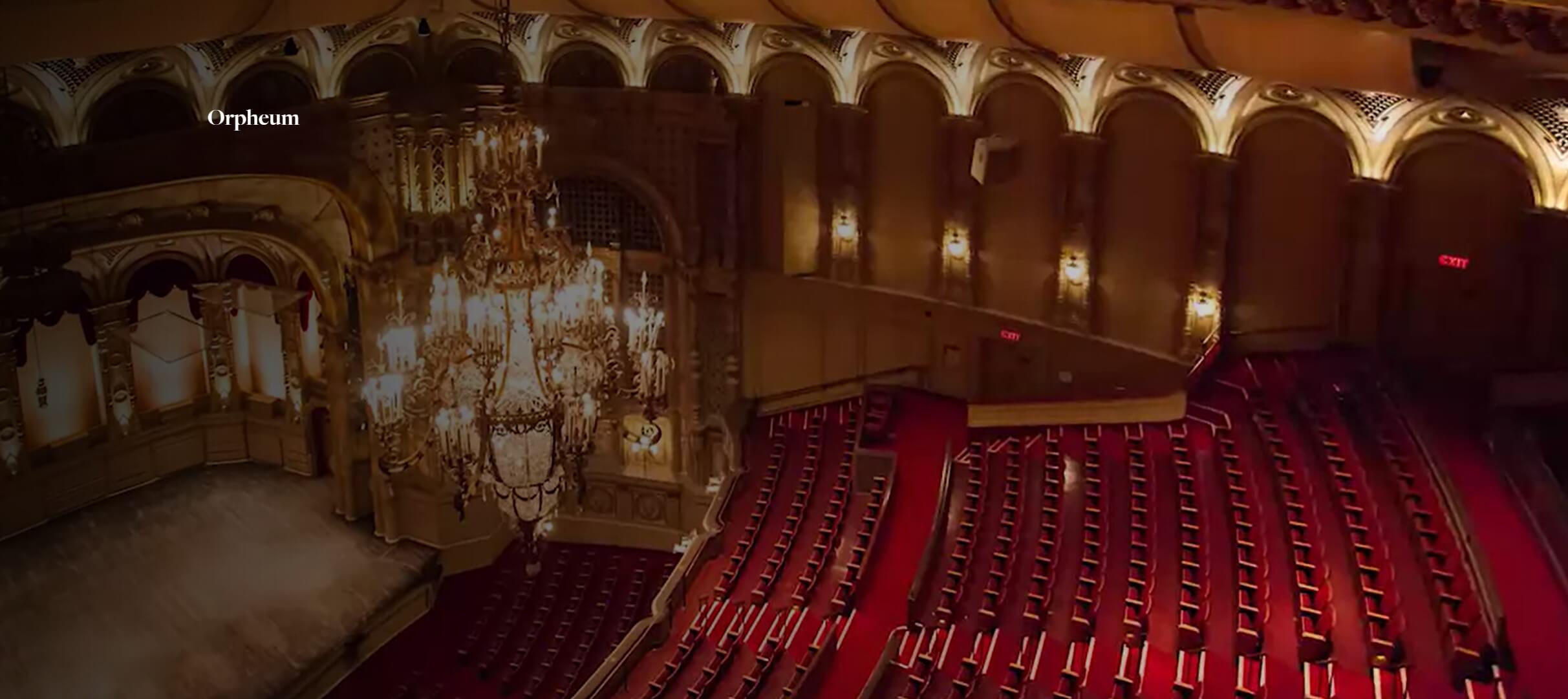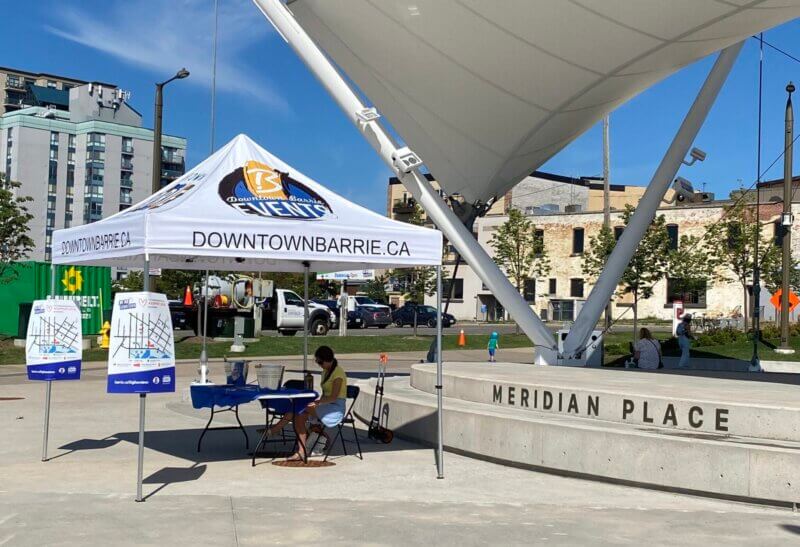Planning a visit to the Orpheum Theatre in Vancouver can be overwhelming and confusing, especially for first-time visitors. Without proper guidance, you may miss out on important details and experiences.
Imagine arriving at the Orpheum Theatre full of excitement, only to find yourself lost in a sea of unfamiliar faces and unsure where to go or what to expect. The last thing you want is to miss out on this historic venue’s magic and grandeur.
The Orpheum Theatre Vancouver Guide is your ultimate companion for an unforgettable experience. This comprehensive guide provides all the necessary information to make the most of your visit. We’ve covered you, from detailed seating charts and show schedules to insider tips and recommendations.
Our guide lets you know where to enter, where to find the best seats, and what amenities are available. You’ll also discover fascinating facts about the theatre’s rich history and architectural beauty.
Don’t let confusion and uncertainty dampen your Orpheum Theatre experience. Get The Orpheum Theatre Vancouver Guide today and embark on a journey filled with awe-inspiring performances and cherished memories.
The Orpheum Theatre
When visiting Vancouver, one of the must-see sites is the storied Orpheum Theatre in Downtown Vancouver. This Vancouver building is a historic theatre entertaining guests since 1927.
It has hosted several events, such as plays, musicals, dance performances, and concerts. Throughout the year, the theatre also presents several special events. The Orpheum Theatre, a beloved performing space for over 90 years, is a singular piece of Vancouver’s past. It is a well-known icon in the City that always brings both locals and tourists unforgettable experiences. This article will provide more excellent information about the Orpheum Theatre. If you’re interested in this subject, keep reading.
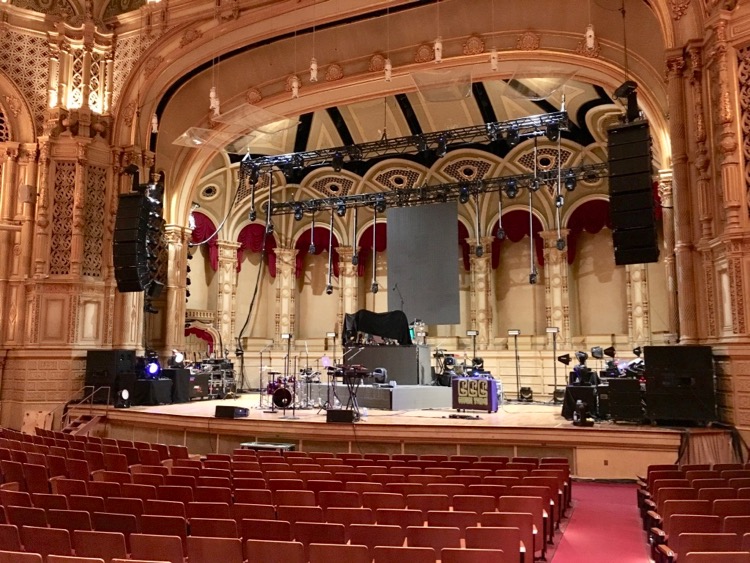
It isn’t easy to find a modern entertainment facility that exudes elegance and sophistication as the Orpheum does with its enormous Art Deco design, soaring columns, and meticulous details. The theatre’s interior is spectacular, with elaborate plasterwork, a shimmering star ceiling, and a magnificent proscenium arch.
Throughout its almost 100-year history, the Orpheum has hosted numerous legendary shows and occasions. The theatre has hosted many events, including Broadway productions, concerts, operas, silent films from the early days, and vaudeville acts. The most well-known artists to grace the stage of the Orpheum are David Bowie, Louis Armstrong, Ella Fitzgerald, and Duke Ellington.
However, the Orpheum is more than just a venue for well-known performers. Several of Vancouver’s top cultural institutions, such as Ballet BC, the Vancouver Opera, and the Vancouver Symphony Orchestra, also call it home. These groups offer the city top-notch cultural experiences by using theatres as their principal performance spaces.
The Orpheum has recently undergone several modifications and renovations to guarantee it will always be a cutting-edge location. Nevertheless, the theatre has managed to hold onto its personality and allure, making it one of Vancouver’s most cherished icons.
Visiting the Legendary Orpheum Theatre is an absolute must for anyone visiting or living in Vancouver. Whether you’re there to catch a show, tour the historic building, or admire its stunning architecture, the Orpheum will leave a lasting impression on anyone who visits.
Location
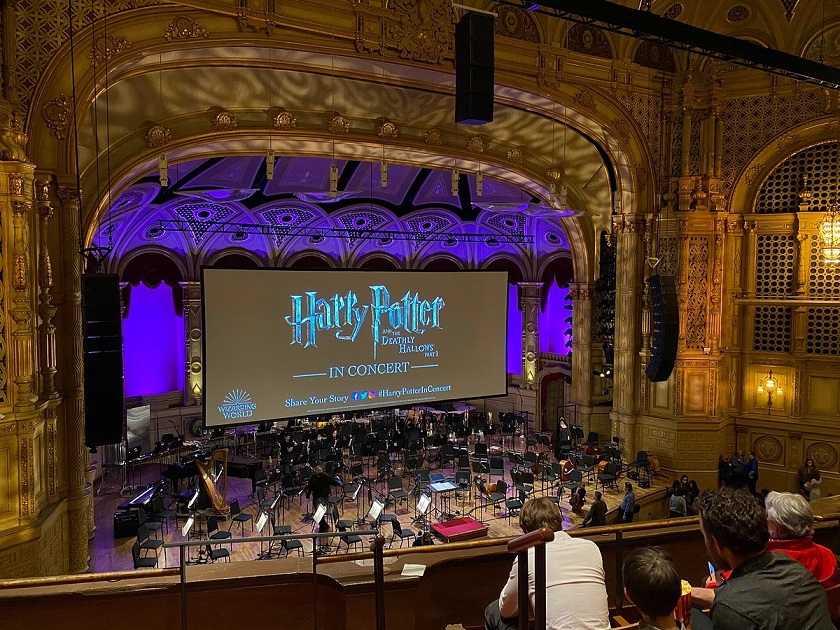
The Orpheum Theatre is at 601 Smithe Street and Broadway in downtown Vancouver. It is a well-known city landmark and conveniently located near public transportation.
The audience can enter through two doors. The first is at 601 Smithe Street, while the other is at 884 Granville Street, just around the block.
Many of the City’s well-known locations, including the Vancouver Art Gallery, Coal Harbour, and Gastown’s retail and entertainment area, are easily accessible on foot from the theatre.
It is a handy location for inhabitants and tourists because it is close to essential transit connections.
Background of the Theatre
The Orpheum Theatre in Vancouver was constructed in 1927 as a vaudeville house and leased to the Orpheum Circuit.
Here, notable performers like Charlie Chaplin, the Marx Brothers, and Rudy Vallee gave performances.
The Orpheum Circuit, however, was forced to close when the Great Depression started, and Famous Players took over the theatre in the early 1930s.
Benjamin Marcus Priteca, a Scottish architect, designed the Orpheum Theatre in a “conservative Spanish Renaissance” style. Joseph Langer, a businessman from Vancouver, performed it.
The finished theatre became a popular venue for concerts, vaudeville acts, silent movies, and plays and was known as the “Grand Old Lady of Granville Street.”
The first performance in this theatre was hosted by the Marx Brothers, Rudy Vallee, and other performers affiliated with the Orpheum Circuit on November 7, 1927.
The Orpheum Theatre continued to be a cultural hub in Vancouver, as it was a popular place to host live shows and concerts due to its reputation and location in the heart of downtown Vancouver.
It was also a suitable venue for the Vancouver Symphony Orchestra from 1930 to 1959, as it had superior acoustics to other media in the City.
From the 1930s to the 1970s, a parade of celebrities, including Marian Anderson, Louis Armstrong, Arthur Rubinstein, and Frank Sinatra, performed on its stage.
The theatre hosted various events, including film screenings, concerts, lectures, and community events.
Ackery was known for creating innovative promotions (1935-1969), such as hosting a ‘Battle of the Bands in the theatre’s lobby, which drew in many locals.
These efforts created a strong connection between the theatre and the Vancouver community, resulting in a large-scale effort to save the theatre from demolition in 1973.
Capacity

The Orpheum Theatre in Vancouver is renowned for its stunning architecture and rich history. When it comes to the capacity of the Orpheum Theatre, it can accommodate a substantial number of attendees.
With a seating capacity of approximately 2,780, the Orpheum Theatre offers ample space for audiences to enjoy various performances, including concerts, theatrical productions, and other live events. This spacious venue ensures patrons have comfortable seating arrangements and an excellent view of the stage from any angle.
The large capacity of the Orpheum Theatre makes it an ideal choice for hosting major events and attracting a diverse range of performers from around the world. Whether you’re attending a classical music concert or a Broadway show, the Orpheum Theatre’s capacity ensures that you can experience these performances in an immersive and memorable way.
It’s worth noting that while the Orpheum Theatre can accommodate thousands of guests, it still maintains an intimate atmosphere due to its exceptional design. This combination of size and ambiance contributes to its reputation as one of Vancouver’s premier entertainment venues.
Whether you’re planning to attend an event or simply curious about the Orpheum Theatre’s capacity, this iconic venue has ample space to accommodate large audiences while providing an unforgettable experience for all attendees.
The Architecture
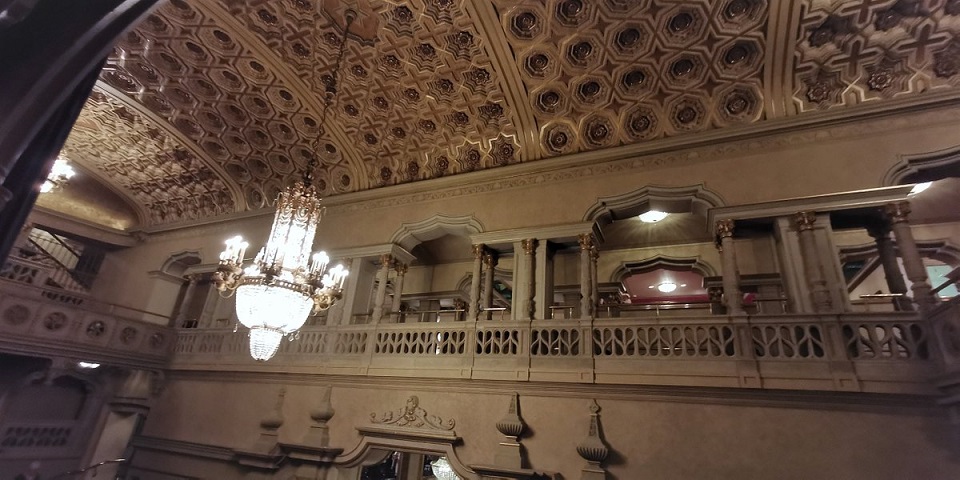
The Orpheum Theatre displays much of its original splendour despite some loss of detail and some updating for acoustics and patron comfort.
The original design by architect G.W.H. Guernsey includes a grand proscenium arch, stained glass skylight, richly detailed plasterwork, and a five-manual, 35-rank Wurlitzer pipe organ.
The theatre has been restored to its original colour scheme, with its original lighting, carpets, and seating incorporated into the restoration.
Given its style and design, with Moorish, Gothic, and Spanish Renaissance elements, it has become one of the most notable examples of cinema architecture based on North American cinemas in the 1920s.
The grandeur of the building is one of Vancouver’s most popular tourist attractions, drawing visitors from all over the world to admire its beauty and creative design.
Disparate elements are linked through the effective use of repetition. For instance, the overlapping arches that encircle the ceiling visually connect the oval dome to the curves of the organ screens on either side of the elliptical proscenium arch.
This repetition of arches, shapes, and curves helps to unify the overall design of the building. It also makes it easier for viewers to simultaneously take in the entire composition. In addition, the repetition of these elements creates a sense of balance and harmony.
The overall effect of repetition is stability and balance, creating a sense of harmony and unity pleasing to the eye.

A series of long hallways, opulent staircases, and lobby areas connected the auditorium to the building’s main entrance on Granville Street, which was relatively small.
These corridors, staircases, and lobbies were designed to create a sense of awe and anticipation. This was done as one made their way to the auditorium, with the grandeur of the space quickly becoming apparent. This design dates back to when authorities wanted to reduce the costs of having a broad street frontage. Customers moved through the luxurious rooms like players in a play as part of the arrangement’s theatrical function. This arrangement was further enhanced by the grandeur of the building’s architecture, creating an inviting and awe-inspiring atmosphere.
The theatre’s beautiful art deco design, from its ornate lobby to its stunning auditorium, makes it an ideal setting for various film and television productions. The theatre’s flexibility in accommodating different set designs and lighting has made it an appealing choice for filmmakers. As a result, vesting Orpheum Theatre is one of the things that tourists can do in Vancouver.
Restoration
The Orpheum Theatre was destroyed in early 1970 and needed repairs, which a famous performer did. In 1973, the hall’s function was converted from a theatre to a concert venue under a project led by the City’s mayor, Art Phillips, and the Community Arts Council of Vancouver. In March of 1974, all the restoration expenses were paid for by federal, provincial, and private support.
Under Vancouver architects Thompson, Berwick, Pratt, and Partners, construction began in 1975. In April 1977, the Orpheum began to host performances as a civic concert hall and the official home of the Vancouver Symphony Orchestra. The Orpheum Theatre soon became a premier performance venue, welcoming the world’s most famous performers to grace its stage.
When the structure was repaired in 1979, some changes were made to its design. For example, they removed the tiles that covered the ceiling and painted the top, making it the focus of the auditorium. The theatre’s first decorator, 81-year-old Tony Heinsbergen, imagined Orpheus and a crowd gathered to hear his music. Heinsbergen’s mural was a masterful homage to classical art, bringing timeless beauty to the theatre’s interior and capturing the attention of everyone who visited. The stage was also boosted to the first two rows of seats.
The fly system and step curtains were removed to make room for a permanent orchestra shell. This allowed for larger productions to be performed and for the audience to be closer to the action on stage. The body also helped improve the theatre’s acoustics and amplified the orchestra’s sound. Acoustician Theodore J. Schultz changed the Orpheum Theatre‘s structure to adapt the orchestra’s sound. This has a system of speakers and microphones to disperse sound evenly throughout the room.
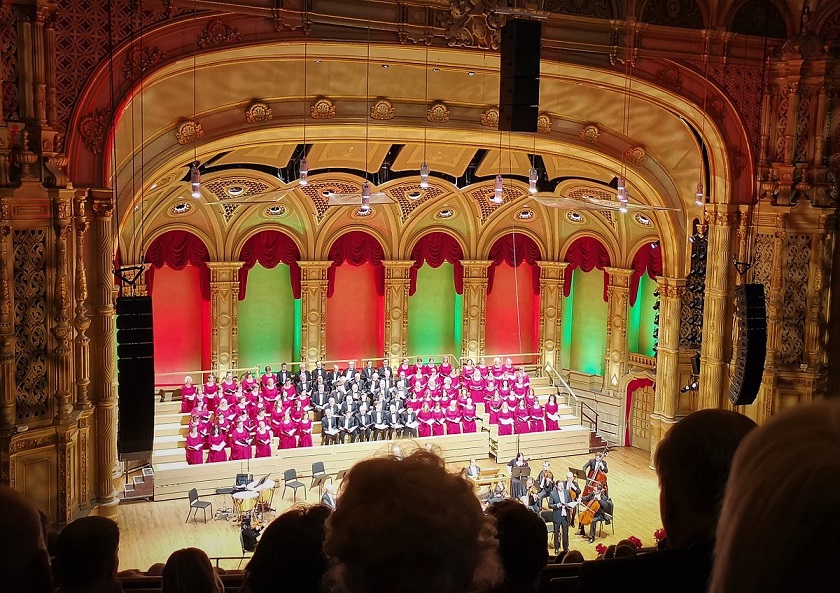
This system picks up the orchestra sound and feeds it into the room through a network of speakers. This ensures the sound is even and balanced, without any hot or cold spots in the room. Besides these, Gerald Jarvis added a brand-new acoustic system. The updated system further improved sound quality and created a pleasant auditory experience for everyone in the room. A new entrance was added in 1983 in Smithe Street, and its good system was upgraded in 1995. 2008, they adjusted the seating, interior signage, sound, and light operation.
The project aimed to bring the theatre up to modern standards and make it more accessible. It also preserved the original architectural features of the building, ensuring that the unique character of the theatre would remain intact. In 2006, the Orpheum Theatre backstage area was expanded and lasted until 2011. This expansion gave the Orpheum a larger, more modern space for their production needs, making their performances even more spectacular.
Seating Chart

Parking
The Orpheum does not have a parkade, although parking is available nearby at meters and in public lots. The Metropolitan Towers property at 930 Seymour Street is advised. Note that although the lot does not close until 11:59 p.m., elevator access ends at 10:30 p.m.
Map
FAQ
Why is it called the Orpheum Theater?
The name “Orpheum” carries historical significance and can be traced back to ancient Greek mythology.
In Greek mythology, Orpheus was a legendary musician and poet. He possessed exceptional musical talents and could charm all living creatures with his melodies. The name “Orpheum” pays homage to this mythical figure.
The term “Orpheum Theater” has been used for numerous theatres across North America since the late 19th century. These theatres were often grand venues that showcased vaudeville acts, live performances, and motion pictures.
The specific reason it is called the Orpheum Theater in Vancouver may be attributed to its historical connection with the original Orpheum Theaters that were popular during the early 20th century. The name was likely chosen to evoke a sense of elegance, artistry, and cultural significance associated with these earlier theatres.
Who owns the Orpheum Vancouver?
The Orpheum Vancouver, a historic theatre in Vancouver, Canada, is owned by the City of Vancouver. The Vancouver Civic Theatres Department manages and operates the theatre, which falls under the jurisdiction of the City’s Cultural Services division.
As a prominent venue for various performing arts events and concerts, the Orpheum has been integral to Vancouver’s cultural scene since its opening in 1927. Its ownership by the City ensures its preservation and continued contribution to the artistic landscape of Vancouver.
What do you wear to the Orpheum?
The dress code for the Orpheum can vary depending on the type of event and personal preferences. However, it is generally recommended to dress in smart or semi-formal attire.
It is expected to see attendees dressed in elegant outfits such as dresses or suits for evening performances such as concerts or theatrical shows. Men may opt for a suit or dress pants paired with a button-up shirt and tie. Women often choose dresses, skirts, or dressy pantsuits.
A more relaxed yet presentable outfit can be appropriate for daytime events like matinees or casual performances. This may include slacks or nice jeans paired with a blouse or collared shirt for men, while women may opt for skirts, dresses, or well-fitting trousers with a blouse.
How many seats does the Vancouver Orpheum have?
The Vancouver Orpheum, a historic and iconic venue in Vancouver, Canada, has a seating capacity of 2,780. This grand theatre is known for its stunning architecture and rich history. It has been a popular destination for various performances, including concerts, theatrical productions, and cultural events. With its ample seating capacity, the Vancouver Orpheum provides an immersive experience for audiences to enjoy a wide range of performances in a magnificent setting.
- Yonge-Dundas Square in Toronto is Now Called “Sankofa Square” - December 17, 2023
- Best Western Brooks’ SureStay Plus debuts in Alberta - December 16, 2023
- Air Canada Arrives in Tulum, Mexico as the First Canadian Airline - December 16, 2023
